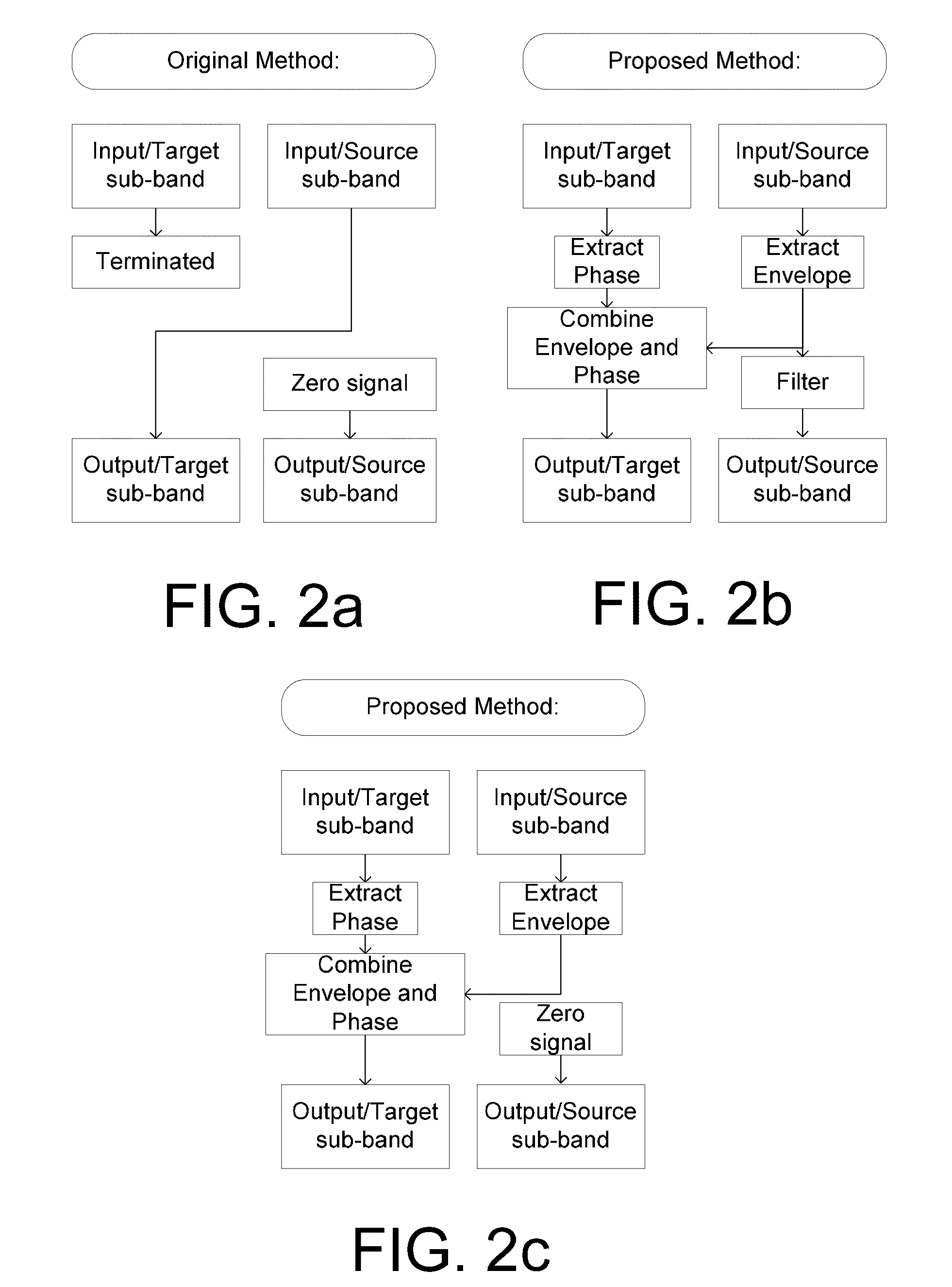Sound perception using frequency transposition by moving the envelope
a frequency transposition and envelope technology, applied in the direction of electrical transducers, tone control, enclosures/cabinets/supports, etc., can solve the problems of sound quality degradation and severely limit the flexibility of the system, so as to improve speech intelligibility, improve user's perception of input sound, and increase sound quality
- Summary
- Abstract
- Description
- Claims
- Application Information
AI Technical Summary
Benefits of technology
Problems solved by technology
Method used
Image
Examples
Embodiment Construction
[0070]FIG. 1a shows a simple frequency compression scheme for an audio signal for converting an input frequency range (here 0.1 kHz to 10 kHz) to an (compressed) output frequency range (here 0.1 kHz to approximately 2.5 kHz). The frequency compression scheme comprises a non-compressed (linear, fin=fout) part and a compressed (fin>fout) part at frequencies, respectively, below and above a predetermined cut-off frequency, fcut-i (here approximately 1.5 kHz and equal to fcut-o).
[0071]In a particular embodiment, a time-frequency representation s(k,m) of a signal s(n) comprises values of magnitude and phase of the signal in a number of DFT-bins (DFT=Direct Fourier Transform) defined by indices (k,m), where k=1, . . . , K represents a number K of frequency values and m=1, . . . , M represents a number M of time frames, a time frame being defined by a specific time index m and the corresponding K DFT-bins. This corresponds to a uni-form frequency band representation, each band comprising a...
PUM
 Login to View More
Login to View More Abstract
Description
Claims
Application Information
 Login to View More
Login to View More - R&D
- Intellectual Property
- Life Sciences
- Materials
- Tech Scout
- Unparalleled Data Quality
- Higher Quality Content
- 60% Fewer Hallucinations
Browse by: Latest US Patents, China's latest patents, Technical Efficacy Thesaurus, Application Domain, Technology Topic, Popular Technical Reports.
© 2025 PatSnap. All rights reserved.Legal|Privacy policy|Modern Slavery Act Transparency Statement|Sitemap|About US| Contact US: help@patsnap.com



